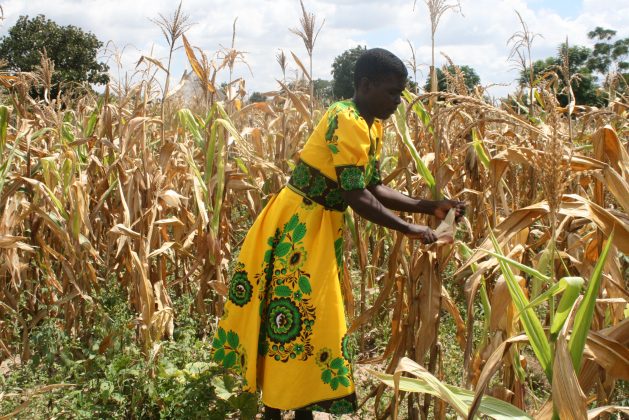HARARE – The country’s maize production is estimated to have risen 17% in the 2019/20 season, but the biggest concern remains the poor yields, which averaged 0.57 tonnes per hectare. According to the Second Round Crop and Livestock Assessment Report, the estimated maize production is 907 628t, which is 17% more than the 776 635t produced during the 2018/2019 season.
Mashonaland West, Mashonaland Central and Mashonaland East, are contributing almost 70% of the total maize production. Mashonaland West has the highest yield per hectare of 1.02t/ha at 309 984t, Mash Central at 0.90t/ha, Mash East at 0.67t/ha, Manicaland 0.29t/ha while Matabeleland North has the lowest at 0.22t/ha. The average national yield is 0.57t/ha mainly attributed to the outcomes of a complex interplay of climatic variations such as the late onset of the rain season, mid-season dry spells and an early cessation to the rainfall season.
The last effective rainfall in most parts of the country was around the second and third weeks of March, although parts of Mashonaland Central and Mashonaland West experienced a late cessation of the rainfall which extended into April. According to agriculture experts’ current maize yields are 10% of rainfed potential fall far short of the desired 7-10t/ha, which would ensure food self sufficiency.
Other challenges contributing to the poor yields include economic factors after government greatly reduced its input programmes, less access to extension services and an outdated marketing system where farmers are not making real profits on their maize crop leading to poor growth in farm productivity.
The communal sector had the biggest area under maize crop; however, yields remain lowest in this sector at 0.33t/ha while the A2 sector has the highest yields at 1.83t/ha and a very significant proportion of the overall maize produced at 275 318t.
The total cereal production is 1 060 143t against a national cereal requirement of 2 227 782t for human and livestock consumption. Cereal requirement for livestock is estimated at 450 000t. Because there was no carryover stock from the Grain Marketing Board from the last season after the country used up its strategic grain reserve, a larger deficit is expected. However, from the annual national requirements a cereal deficit of 1.16 mln tonnes is anticipated.
Mash West and Mash Central have cereal surplus production while the rest of the provinces have deficits. Out of the 60 administrative rural districts in the country, 32 (53%) are in a deficit situation with cereals that can last between 0 – 6 months.
Meanwhile, Zambia is this year expected to record a fourth historic maize bumper harvest in 26 years, estimated at 3.4 million tonnes.
Elsewhere, cotton production is estimated at 101 million kg) which is 52% more than 76.6 mln achieved last season due to increased coverage of the Presidential Input Scheme.
Tobacco production is estimated at 224.158 million kg compared to 259. 53 million kgs in 2018/2019 season which is a 14% decrease.
The national beef cattle herd declined by 5.7% from 5 774 525 cattle in 2018 to 5 443 770 cattle in 2019. The average national cattle mortality rate increased from 5% in 2018 to 9% in 2019. The national calving rates range from 34% in communal areas to 46% in the large-scale commercial sector against a national target of 60%.











